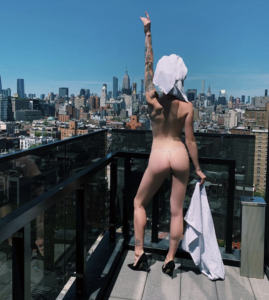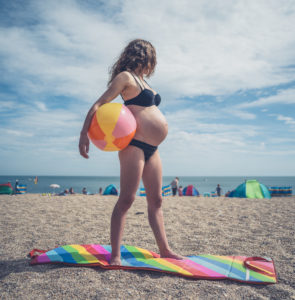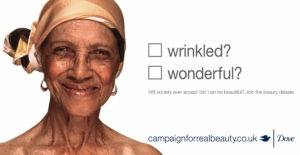
I don’t know if this is just a New York thing, but I’m seeing more and more young women–say 16 to 26–“letting it all hang out,” literally and figuratively. The Cambridge English Dictionary defines the phrase as “behaving freely without being shy or feeling worried about what other people will think of you,” and that’s precisely what these women seem to be doing. Obese girls are wearing clothes so tight or short their bodies look like dough that’s risen out of a bowl. Slender girls are parading around with their breasts spilling out of their low-cut shirts, their buttocks popping out of their skimpy shorts. Hair looks unkempt, not like Meg Ryan’s back in the day, but like it hasn’t seen shampoo or a comb in months.
And don’t get me started on the pregnancy look one website called “Bump Proud” back in 2012. It just won’t go away. Growing bellies bulging out of slinky dresses and pants. Women in bikinis in their third trimesters. We dressed our pregnant stomachs 30 years ago with “maternity clothes” that weren’t winning fashion awards, but I think the big belly brigade looks gruesome, especially the women who had big bellies before they became pregnant. Pregnancy may be a beautiful thing on one level, but silhouettes meant for size 8 ladies with flat stomachs should stay on size 8 ladies with flat stomachs.
became pregnant. Pregnancy may be a beautiful thing on one level, but silhouettes meant for size 8 ladies with flat stomachs should stay on size 8 ladies with flat stomachs.
“If you’re proud of your body even if you’re pregnant, show it off,” commented one woman. I say: Get a mirror first and take a few courses in style. Subtlety and modesty are actually the classiest ways to “show it off.”
Now to the women who have nothing to hide but often do. Women with mastectomy scars who won’t put on bathing suits or dresses with low necklines. Women with significant birthmarks on exposed parts of their bodies who go to all lengths to hide them, even if it means wearing long sleeves every day of the year. Older women with jiggly underarms who won’t wear sleeveless tops (that’s me!) Women with crooked teeth who avoid smiling.
 Gillette introduces us to a few of these women in a 30-second TV commercial for its Venus women’s razor. “There’s no me without my skin,” says Marika, whose congenital birthmarks are scattered all over her body and face. “In a world obsessed with skin perfection, Venus wants every woman to feel comfortable in her skin just as it is—scars, marks, flaws and all,” the company said. I applaud Gillette, just as I cheered Dove when it first used real women in its 2004 Real Beauty promotion. Fifteen years later, Dove still uses only real women in its campaign to emphasize its commitment to redefining beauty and educating young women throughout the world on body confidence and self-esteem.
Gillette introduces us to a few of these women in a 30-second TV commercial for its Venus women’s razor. “There’s no me without my skin,” says Marika, whose congenital birthmarks are scattered all over her body and face. “In a world obsessed with skin perfection, Venus wants every woman to feel comfortable in her skin just as it is—scars, marks, flaws and all,” the company said. I applaud Gillette, just as I cheered Dove when it first used real women in its 2004 Real Beauty promotion. Fifteen years later, Dove still uses only real women in its campaign to emphasize its commitment to redefining beauty and educating young women throughout the world on body confidence and self-esteem.
Gillette and Dove may be two big beauty brands, but it’s going to take many more brands to affect real change. L’Oreal’s website and ad campaigns look like they have for decades. Real women don’t exist in L’Oreal’s world. The company even airbrushed Julia Roberts’ photos in 20011 ads, but was forced to pull them because they didn’t represent the results women could achieve with their products. If Julia Roberts isn’t beautiful enough for L’Oreal, I don’t imagine it’s going to cast “real women” any time soon.

